
How to Clean Out a Septic Drain Field Safely
- 1- Understanding the Septic Drain Field
- 2- Signs Your Septic Drain Field Needs Cleaning
- 3- Safe Methods to Clean a Septic Drain Field
- 4- Common Mistakes to Avoid When Cleaning a Septic Drain Field
- 5- Case Study: Successful Septic Drain Field Cleaning
- 6- How to Extend the Life of Your Septic Drain Field
Maintaining a septic system is crucial for keeping your home’s plumbing working smoothly. A vital component of your septic system is the drain field, where wastewater is filtered and treated before being absorbed into the ground. If neglected, this area can become clogged or compromised, leading to expensive repairs. In this guide, we will show you how to clean out a septic drain field safely and provide tips for maintaining your septic system to ensure it continues to function effectively for years to come.
1- Understanding the Septic Drain Field
The septic drain field, also known as a leach field or soil absorption field, is part of the septic system that helps treat wastewater. After wastewater leaves the septic tank, it flows into the drain field, where it is filtered through the soil. This process removes harmful bacteria and pollutants, making the water safe to return to the environment.
The drain field is made up of trenches filled with perforated pipes or chambers that allow the water to percolate through the soil. Because the drain field is constantly exposed to wastewater, it can become clogged over time, reducing its ability to filter water effectively. Regular maintenance and cleaning are essential to keeping the system functioning properly.
2- Signs Your Septic Drain Field Needs Cleaning
While septic systems are built to last, the drain field can show signs that it needs attention. Recognizing these signs early can help you avoid more serious problems, such as sewage backup or ground contamination. Here are some common indicators that your septic drain field may need cleaning:
1. Standing Water or Wet Spots
If you notice water pooling on or around the drain field area, it may be a sign of a clogged or overwhelmed system. This can occur when the soil is saturated and cannot absorb the wastewater efficiently.
2. Foul Odors
A strong, unpleasant odor near the drain field is a clear indication that the system is not functioning properly. These odors are caused by untreated wastewater that has not been filtered correctly.
3. Slow Draining Fixtures
If you notice that water drains slowly from sinks, showers, or toilets, it could be a sign that the septic system, including the drain field, is clogged and needs attention.
4. Lush, Greener Grass
While a healthy lawn is usually a sign of good care, overly lush or green grass over the drain field could indicate that wastewater is not being properly filtered and is nourishing the grass. This is a warning sign that the system might be overloaded or malfunctioning.
3- Safe Methods to Clean a Septic Drain Field
Cleaning your septic drain field should be done carefully to avoid damaging the system or causing harm to the environment. Here are some safe methods to clean and maintain the drain field:
1. Professional Inspection and Cleaning
For a thorough and safe cleaning, it’s best to hire a professional septic service provider. They can inspect your septic system, including the drain field, to determine the extent of the buildup and recommend appropriate cleaning methods. Professionals use specialized equipment to remove any blockages or debris without causing damage to the pipes or surrounding soil.
2. Use of Septic Additives
Septic tank additives can help break down waste and improve the flow of wastewater through the system. These additives often contain enzymes or bacteria that aid in the natural filtration process. However, it’s important to consult a professional before using additives, as improper use could disrupt the system’s balance.
3. Maintain Proper Drainage
Ensure that the area around your septic drain field is well-drained and that water from downspouts or other runoff is not directed onto the drain field. Excess water can overwhelm the system and reduce its efficiency. Diverting excess water away from the field will help it function properly.
4- Common Mistakes to Avoid When Cleaning a Septic Drain Field
When cleaning or maintaining your septic drain field, there are several mistakes you should avoid to prevent further damage to the system:
1. Overloading the System
One of the most common mistakes is overloading the septic system by flushing inappropriate materials or using excessive amounts of water. This can overwhelm the drain field, leading to clogs and backups. Always follow guidelines on what can be flushed down the toilet or drained down sinks.
2. Using Harsh Chemicals
Avoid using harsh chemicals or bleach in your septic system, as they can kill the beneficial bacteria that help break down waste. Stick to eco-friendly cleaners and only use products that are septic-safe.
3. Ignoring Regular Maintenance
Skipping regular inspections or failing to have the septic tank pumped periodically can lead to more severe problems with the drain field. Schedule regular maintenance to ensure your system operates efficiently.
5- Case Study: Successful Septic Drain Field Cleaning
Take the example of the Davis family in Texas. Their septic system had been functioning fine for years, but they noticed standing water near their drain field during a rainy season. They decided to have their septic system professionally inspected. The technician found that the drain field had become clogged with debris over time. Using specialized equipment, the technician was able to safely clean out the system and restore its function. The family was relieved to avoid costly repairs and keep their septic system running smoothly.
6- How to Extend the Life of Your Septic Drain Field
To ensure that your septic drain field lasts as long as possible and remains in good working order, follow these tips:
- Limit Water Use: Reduce water usage in your home by fixing leaks, installing low-flow fixtures, and spreading out laundry loads throughout the week.
- Avoid Heavy Traffic: Keep vehicles and heavy equipment off the drain field area to prevent compaction of the soil, which can interfere with the filtration process.
- Regular Pumping: Have your septic tank pumped every 3–5 years to remove solids that could clog the drain field.
- Proper Waste Disposal: Do not flush non-biodegradable items or chemicals into your septic system, as these can disrupt the natural treatment process.
By following these simple steps, you can extend the life of your septic drain field and avoid costly repairs. Regular maintenance is key to ensuring your system continues to work efficiently for years to come.
If you’re looking for reliable septic care products or need professional assistance, visit Plumbers Supply Hub for expert recommendations and the best tools to maintain your septic system.



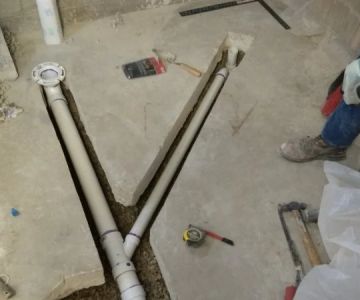





 Oakland Plumbing LLC5.0 (17 reviews)
Oakland Plumbing LLC5.0 (17 reviews) Midwest Plumbing & Service4.0 (7 reviews)
Midwest Plumbing & Service4.0 (7 reviews)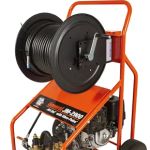 Moberly Plumbing4.0 (117 reviews)
Moberly Plumbing4.0 (117 reviews)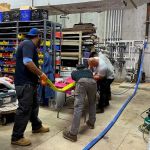 American Trenchless Technologies4.0 (8 reviews)
American Trenchless Technologies4.0 (8 reviews) Tony's Plumbing3.0 (12 reviews)
Tony's Plumbing3.0 (12 reviews) Socal Plumbing Co5.0 (5 reviews)
Socal Plumbing Co5.0 (5 reviews)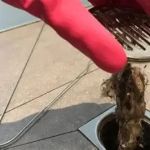 How to Repair a Hairball Clog Without Harsh Chemicals
How to Repair a Hairball Clog Without Harsh Chemicals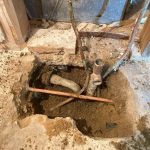 How to Repair a Junction That Is Leaking Under Slab: A Comprehensive Guide
How to Repair a Junction That Is Leaking Under Slab: A Comprehensive Guide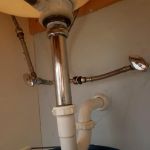 How to Replace a Sink Overflow Tube: A Complete Step-by-Step Guide
How to Replace a Sink Overflow Tube: A Complete Step-by-Step Guide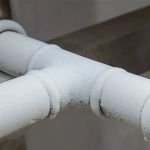 What Causes Frozen Pipes and How You Can Prevent It - Expert Tips
What Causes Frozen Pipes and How You Can Prevent It - Expert Tips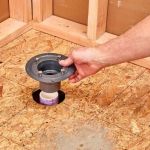 How to Replace a Shower Niche Drain: Step-by-Step Guide for Homeowners
How to Replace a Shower Niche Drain: Step-by-Step Guide for Homeowners How to Replace an In-Wall Shower Drain: Step-by-Step Guide
How to Replace an In-Wall Shower Drain: Step-by-Step Guide